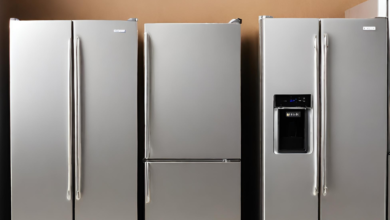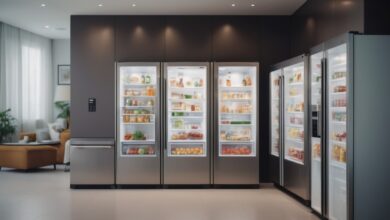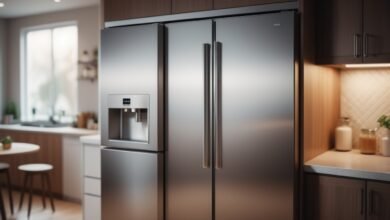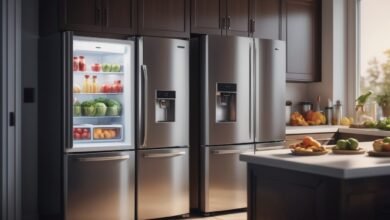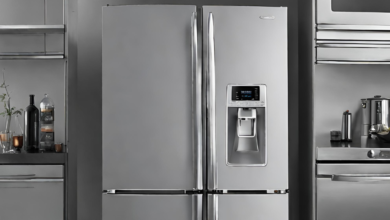Guidelines for Selecting the Ideal Kitchen Refrigerator Size
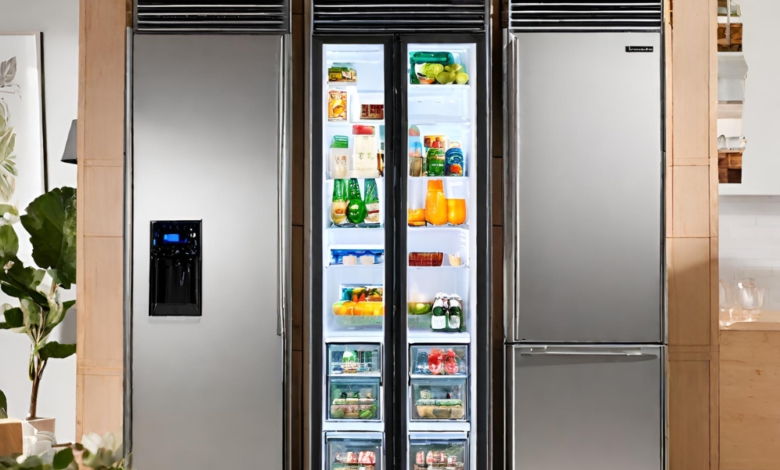
Choosing the right refrigerator size for your kitchen is a crucial decision that impacts both the functionality and aesthetics of the space. In this comprehensive blog, we will delve into the guidelines for selecting the ideal kitchen refrigerator size. From understanding your family’s needs to navigating available space, we will explore every aspect to help you make an informed decision that aligns with your lifestyle.
The Significance of the Right Size
The refrigerator is a central appliance in the kitchen, influencing the organization of groceries, meal planning, and the overall flow of daily life. Selecting the right size is not just about fitting the dimensions but also ensuring that it meets the unique requirements of your household.
Assessing Your Family’s Needs
1. Determine Your Household Size
The first step in selecting the ideal refrigerator size is to consider the number of people in your household. A larger family typically requires a refrigerator with more storage space to accommodate groceries for multiple meals.
2. Consider Lifestyle Factors
Take into account your family’s lifestyle and habits. If you frequently entertain guests or prefer to buy groceries in bulk, you may need a larger refrigerator to accommodate the additional food and beverage storage.
3. Evaluate Cooking Frequency
Assess how often you cook at home. If you prepare meals regularly, you’ll likely need a refrigerator with ample space for fresh ingredients, leftovers, and meal prep items. Those who cook less frequently may require a smaller unit.
Understanding Types of Refrigerators
4. Top-Freezer Refrigerators
Top-freezer refrigerators typically have a smaller footprint and are a good option for smaller kitchens. They are a practical choice for those who prioritize freezer space and don’t require extensive refrigerator storage.
5. Bottom-Freezer Refrigerators
Bottom-freezer refrigerators are ideal for easy access to fresh foods. With the refrigerator section at eye level, you can organize and retrieve daily-use items without bending down. Consider this style if you prioritize fresh food storage.
6. Side-by-Side Refrigerators
Side-by-side refrigerators offer vertical division between the fresh food and freezer sections. They are well-suited for kitchens with narrow spaces, providing easy access to both compartments. However, their narrower design may limit storage for wider items.
7. French Door Refrigerators
French door refrigerators combine a bottom freezer with side-by-side refrigerator doors on top. This style is popular for its spacious and flexible interior, making it an excellent choice for larger households or those who love to entertain.
8. Compact Refrigerators
Compact or mini-fridges are designed for smaller spaces, such as studios, offices, or as secondary units. They are not suitable for primary food storage for a family but can serve specific needs, like holding beverages or snacks.
Measuring Available Space
9. Measure Width, Height, and Depth
Accurate measurements of the space designated for your refrigerator are crucial. Measure the width, height, and depth of the designated area, considering any surrounding cabinetry or walls that may impact the size of the refrigerator that can fit.
10. Allow for Ventilation Space
Refrigerators require adequate ventilation space to operate efficiently. Leave some clearance on the sides, back, and top to ensure proper airflow. This not only helps with energy efficiency but also prevents the refrigerator from overheating.
11. Check Door Swing Clearance
Consider the swing of the refrigerator doors. Make sure there is enough space for the doors to open fully without hitting adjacent walls or cabinetry. Some refrigerators come with reversible doors, allowing you to adjust the swing direction.
Determining Storage Capacity
12. Understand Refrigerator Capacity
Refrigerator capacity is measured in cubic feet. It’s crucial to understand your storage needs and choose a capacity that can comfortably accommodate your groceries without overcrowding.
13. Factor in Freezer Capacity
Consider your freezer requirements. If you frequently buy frozen foods or batch-cook and freeze meals, a larger freezer capacity is essential. Some refrigerators offer additional freezer drawers or compartments for better organization.
14. Evaluate Adjustable Shelves and Bins
Opt for refrigerators with adjustable shelves and bins. This flexibility allows you to customize the interior space based on the size of items you need to store, from tall bottles to bulky items like a turkey during the holidays.
Energy Efficiency and Environmental Impact
15. Look for Energy Star Certification
Energy Star-certified refrigerators meet strict energy efficiency guidelines set by the U.S. Environmental Protection Agency (EPA). Choosing an Energy Star-rated refrigerator not only reduces your utility bills but also minimizes environmental impact.
16. Consider Inverter Technology
Refrigerators with inverter technology are more energy-efficient. This technology adjusts the compressor speed based on the cooling needs, resulting in less energy consumption and quieter operation.
17. Evaluate LED Lighting
LED lighting is not just about aesthetics; it also contributes to energy efficiency. Refrigerators with LED lighting consume less energy than traditional incandescent bulbs and provide bright, uniform illumination.
Budget Considerations
18. Set a Realistic Budget
Determine your budget for a new refrigerator. While larger and feature-rich models may be enticing, it’s essential to align your budget with your actual needs. Consider long-term savings in energy costs when investing in an energy-efficient model.
19. Explore Financing Options
Some retailers offer financing options for appliances. If a refrigerator with all the features you desire is slightly above your budget, explore financing plans that allow you to make manageable monthly payments.
20. Compare Long-Term Costs
Consider the long-term costs of owning a refrigerator. Energy-efficient models may have a higher upfront cost but can result in significant savings on energy bills over the lifespan of the appliance.
Additional Features and Convenience
21. Ice and Water Dispensers
Refrigerators with built-in ice and water dispensers add convenience but may impact the overall size and cost. Consider whether these features align with your preferences and daily routine.
22. Smart Refrigerator Features
Explore smart refrigerator features, such as touchscreen displays, Wi-Fi connectivity, and app integration. While these features may enhance convenience, it’s essential to weigh their importance against the potential increase in cost.
23. Door-in-Door Design
Some refrigerators come with a door-in-door design that allows you to access frequently used items without fully opening the door. While convenient, this feature may impact the overall storage capacity.
Practical Considerations
24. Check for Door Clearance
Ensure that the refrigerator can be brought into your kitchen without any issues. Measure doorways, hallways, and stairwells to guarantee that the refrigerator can be delivered and installed without complications.
25. Evaluate Noise Levels
Consider the noise levels of the refrigerator, especially if your kitchen is adjacent to living or sleeping areas. Modern refrigerators are designed to operate quietly, but it’s worth checking reviews for noise feedback.
26. Research Brand and Model Reliability
Research the reliability of different brands and models. Reading customer reviews and checking reliability ratings can provide insights into the performance and durability of a specific refrigerator.
Considering Future Needs
27. Anticipate Future Changes
Consider any upcoming changes in your household, such
as the addition of family members or changes in lifestyle. Opting for a slightly larger refrigerator than your current needs may account for future growth.
28. Evaluate Resale Value
If you anticipate moving or upgrading your appliances in the future, consider the resale value of the refrigerator. Popular brands and models with desirable features may retain their value better over time.
29. Flexible Storage Solutions
Choose a refrigerator with flexible storage options that can adapt to changing needs. Features like adjustable shelves, removable bins, and convertible compartments provide versatility for varying storage requirements.
Conclusion
Selecting the ideal kitchen refrigerator size involves a thoughtful evaluation of your family’s needs, available space, and budget considerations. By considering factors such as lifestyle, types of refrigerators, measurement constraints, storage capacity, energy efficiency, and additional features, you can make an informed decision that enhances both the functionality and aesthetics of your kitchen. Take the time to research and explore various options, and you’ll be rewarded with a refrigerator that seamlessly integrates into your daily life. Happy refrigerating!
